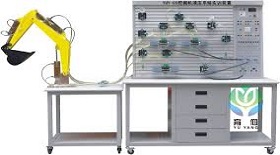Common fault of hydraulic system-hole phenomenon
Phenomenon: if the hydraulic system is permeated with air, the bubbles in the liquid will rapidly burst under the action of high pressure as the liquid flow moves to the area with high pressure, causing local hydraulic shock and resulting in noise and vibration. In addition, because the bubble breaks the flow continuity to reduce the oil flow capacity of the oil pipeline, it causes fluctuations of flow rate and pressure, which makes the hydraulic component bear the impact load and affect its service life.
The reason: hydraulic oil always contains a certain amount of air, which can be dissolved in the oil or be mixed in the form of air bubbles. When the pressure is lower than the air separation pressure, air dissolved in oil is separated and bubbles are formed. When the pressure falls below the saturated vapor pressure of the oil, the oil will boil and create a lot of bubbles. These bubbles mix in the oil to form a discontinuous state, which is known as hole phenomenon.
Location: it is lower than atmospheric pressure in oil suction mouth and oil pipe, being easy to produce air pockets. When the oil flows through small gaps such as throats, the pressure drops because of the increase in velocity, which also produces air pockets.
Hazard: the bubble bursts rapidly when the oil moves to the high-pressure area under the action of high pressure, resulting in sudden reduction in volume and the surrounding high-pressure oil flows through to supplement, causing local instantaneous impact, sharp rise in pressure and temperature and producing strong noise and vibration.
Measures: the structural parameters of the hydraulic pump and the suction pipeline of the pump should be designed correctly to avoid the narrow and sharp oil channel and to prevent the generation of low pressure area. Reasonable selection of machine parts materials increase mechanical strength, improve surface quality, and improve corrosion resistance.



